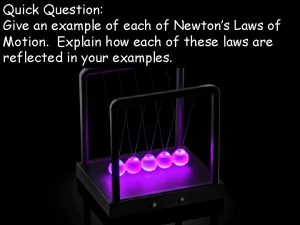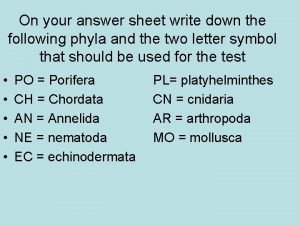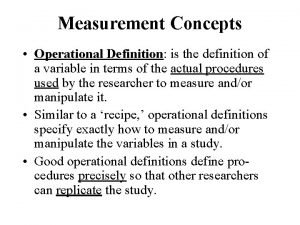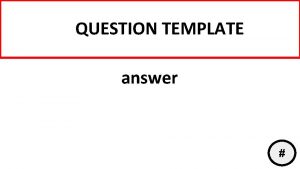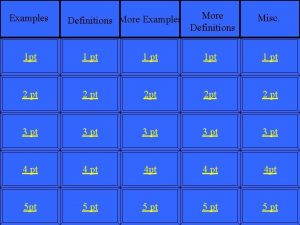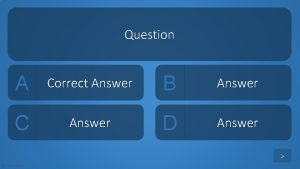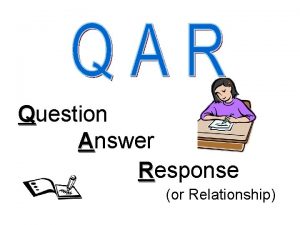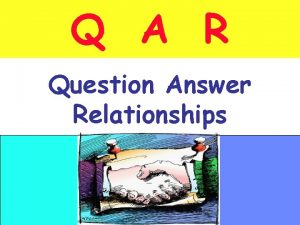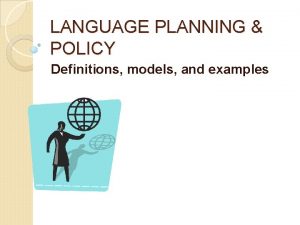Quick Question Answer with details examples and definitions















- Slides: 15

Quick Question: Answer with details, examples, and definitions. Say as much as you can about each one. 1. What is work? 2. What is energy and what are the two major types of energy? 3. What are some of the different forms of energy?

Remembering Physical Science: • Work happens when a force causes an object to move a distance. • It occurs when energy is transferred to an object causing it to move. • Described mathematically by:


Nope! It Man, is a hardlythis seems lot ofbut work! fair, no Right? movement, no work.

0 movement = 0 work

• Energy is the capacity to do work. • Work changes energy from one form of energy to another. • Energy is a scalar quantity and cannot be calculated with vectors. • It is measured in Joules:


The Law of Conservation of Energy states that energy cannot be created or destroyed. All changes in the amount of energy perceived in an object is simply the conversion from one form of energy to another.

Work can be thought of as another term for energy. Raising a ball to the top of an inclined plane requires work…a force is applied to an object to move it the distance to the top of the inclined plane.

If a force applied to an object does not make it move, no work has been done.

The energy used to raise an object to a position higher than its reference height (starting point) is “stored” in the object. This is called Potential Energy. The greater the height, the greater the PE.

As the ball begins to move down the plane, the potential energy is converted into kinetic energy. Kinetic energy is the energy of motion

For a rolling ball, 2 types of motion are involved. What do you think they are? 1. Linear Kinetic Energy 1. Rotational Kinetic Energy

The total kinetic energy of the system of a ball rolling down a plane is the sum of the linear and rotational kinetic energy.

Conservation of Energy Lab
 Quick find algorithm
Quick find algorithm Quickchek menu
Quickchek menu Costas levels of questions
Costas levels of questions What is the difference between major and minor details
What is the difference between major and minor details Main idea major and minor details
Main idea major and minor details Quick question example
Quick question example Answer the following question in your answer sheet
Answer the following question in your answer sheet In your notebook write three to five
In your notebook write three to five Face validity definition
Face validity definition Section quick check chapter 10 section 1 meiosis answer key
Section quick check chapter 10 section 1 meiosis answer key Closed question
Closed question Read the text below for questions
Read the text below for questions Adhd treatment goals
Adhd treatment goals Question words present simple
Question words present simple Contoh paraphrase
Contoh paraphrase Factor isolating questions description
Factor isolating questions description





